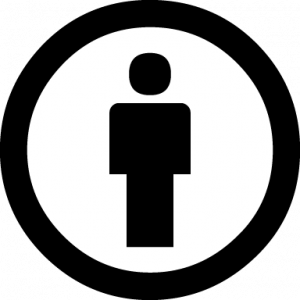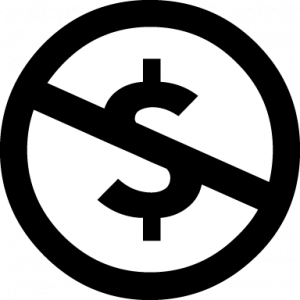3.1 License Design and Terminology
Do you “speak CC” yet? This lesson covers the acronyms, terms, and symbols used in connection with Creative Commons’ tools, as well as some key things to know about how the licenses were designed.
Learning Outcomes
- Differentiate the meaning of different CC icons
- Identify the different layers and elements of CC licenses and tools
Big Question / Why It Matters
Given that most of us are not lawyers, what do we need to know about the legalities in order to use the CC licenses properly?
Creative Commons’ legal tools were designed to be as accessible to everyone as possible while still being legally robust.
Personal Reflection / Why It Matters to You
Have you ever come across a CC licensed Flickr image that you really liked but were afraid to use because you weren’t sure of the legal terms and conditions? Have you ever been frustrated because you didn’t understand how to decide which of the CC legal tools to use for your own work?
Acquiring Essential Knowledge
Copyright operates by default under an “all rights reserved” approach. Creative Commons licenses function within copyright law, but they use a “some rights reserved” approach. While there are several different CC license options, all of them grant the public permission to use the works under certain standardized conditions. As long as you follow those conditions and the license terms are not violated, the licenses grant those permissions for the duration of the underlying copyright. This is what we mean when we say CC licenses work on top of copyright, not instead of copyright.
The licenses were designed to be a free, voluntary solution for creators who want to grant the public up-front permissions to use their works. Although they are legally enforceable tools, they were designed in a way that was intended to make them accessible to non-lawyers.
The licenses are built using a three layer design.

- The legal code is the base layer. This contains the “lawyer-readable” terms and conditions that are legally enforceable in court. Take a minute and scan through the legal code of CC BY to see how it is structured. Can you find where the attribution requirements are listed?
- The commons deeds are the most well-known layer of the licenses. These are the web pages that lay out the key license terms in so-called “human-readable” terms. The deeds are not legally enforceable but instead summarize the legal code. Take some time to explore the deeds for CC BY and CC BY-NC-ND and identify how they differ. Can you find the links to the legal code from each deed?
- The final layer of the license design recognizes that software plays a critical role in the creation, copying, discovery, and distribution of works. In order to make it easy for websites and web services to know when a work is available under a Creative Commons license, we provide a “machine readable” version of the license—a summary of the key freedoms granted and obligations imposed written into a format that applications, search engines, and other kinds of technology can understand. We developed a standardized way to describe licenses that software can understand called CC Rights Expression Language (CC REL) to accomplish this. When this metadata is attached to CC licensed works, someone searching for a CC licensed work using a search engine (e.g., Google advanced search) can more easily discover CC licensed works.

Example of “machine readable” code from Creative Commons License Chooser. CC BY 4.0
CC license basics
All Creative Commons licenses have many important features in common. Every CC license requires that licensors get credit for their work. CC licenses work around the world and last as long as applicable copyright lasts (because they are built on copyright) and as long as the user follows the terms and conditions of the license. At a minimum, every license helps rights holders (we call them “licensors” when they use CC tools) retain copyright while allowing others to copy and distribute their work in unadapted form for noncommercial purposes. These common features serve as the baseline, on top of which licensors can choose to grant additional permissions when deciding how they want their work to be used[1].
Note for readers: Throughout all of the CC Certificate content, please assume all descriptions of the licenses refer to the most recent version of the CC license suite, Version 4.0, unless otherwise noted. You will learn more about the different versions in Section 3.4.
Choices for the Licensor
All Creative Commons licenses are structured to give users permission to make a wide range of uses as long as users comply with the conditions in the licenses. The basic condition in all of the licenses is that users have to provide credit to the licensors and certain other information, such as where the original work may be found.
CC licensors make a few simple decisions on the path to choosing a license. First, licensors determine if they want to allow commercial use. Second, licensors determine if they want to allow derivative works (also known as adaptations). We’ll address derivative works in Unit 4.
Finally, if licensors decide to allow derivative works, they may also choose to require that anyone who uses the works—we call them licensees—make their new work available under the same license terms. This requires that adapted works are always just as free to reuse as the original works were. This is what is meant by “ShareAlike” and it is one of the mechanisms that helps the digital commons of CC licensed content grow over time. ShareAlike is inspired by the GNU General Public License, used by many free and open source software projects.
These different license elements are symbolized by visual icons.

This symbol stands for Attribution or “BY,” which means a specific form of credit is given to the creator of a work. All of the CC licenses include this condition. A licensor may choose to use a pseudonym or even to be anonymous, but credit must be given if it is requested.
 This symbol stands for NonCommercial or “NC,” which means the work is only available for uses that do not intend commercial gain. Three of the CC licenses include this restriction.
This symbol stands for NonCommercial or “NC,” which means the work is only available for uses that do not intend commercial gain. Three of the CC licenses include this restriction.
 This symbol stands for ShareAlike or “SA,” which means that adaptations based on this work must be licensed under the same license. Two of the CC licenses include this condition.
This symbol stands for ShareAlike or “SA,” which means that adaptations based on this work must be licensed under the same license. Two of the CC licenses include this condition.
 This symbol stands for NoDerivatives or “ND,” which means reusers cannot share adaptations of the work. Two of the CC licenses include this restriction.
This symbol stands for NoDerivatives or “ND,” which means reusers cannot share adaptations of the work. Two of the CC licenses include this restriction.
When combined, these icons represent the six CC license options. The icons are also embedded in the “license buttons,” which each represent a particular CC license type. Section 3.3 explores the combinations in detail.
Public domain tools
In addition to the CC license suite, CC also has two public domain tools represented by the icons below. These public domain tools are not equivalent to licenses:

CC0 enables creators to dedicate their works to the worldwide public domain to the greatest extent possible. While some jurisdictions do not allow creators to dedicate their works to the public domain, CC0 has other legal mechanisms included to allow distribution with few or no conditions. You might also see this tool being used by museums, libraries or archives. This doesn’t mean they are claiming copyright over those works, but rather they are waiving all possible rights they might have in other jurisdictions to the reproductions of those works. (More on CC0 legal mechanisms and scope in Section 3.3.)

The Public Domain Mark is a label used to mark works known to be free of all copyright restrictions. Unlike CC0, the Public Domain Mark has no legal effect when applied to a work. It serves only as a label to inform the public about the public domain status of a work and is often used by museums, libraries, and archives working with very old works. Unlike CC licenses and CC0, which require the license holder to apply the license or legal tool, anyone can apply the Public Domain Mark to a work known to be in the public domain.
Final remarks
There is a learning curve to some of the terminology and basics about how CC legal tools work. But as you now know, it is far less intimidating than it looks! Now that you understand how to “speak CC” and know some of the fundamentals about CC license design, you are well on your way to becoming versed in CC licensing.
- Learn more about the Creative Commons Trademark Policy. ↵